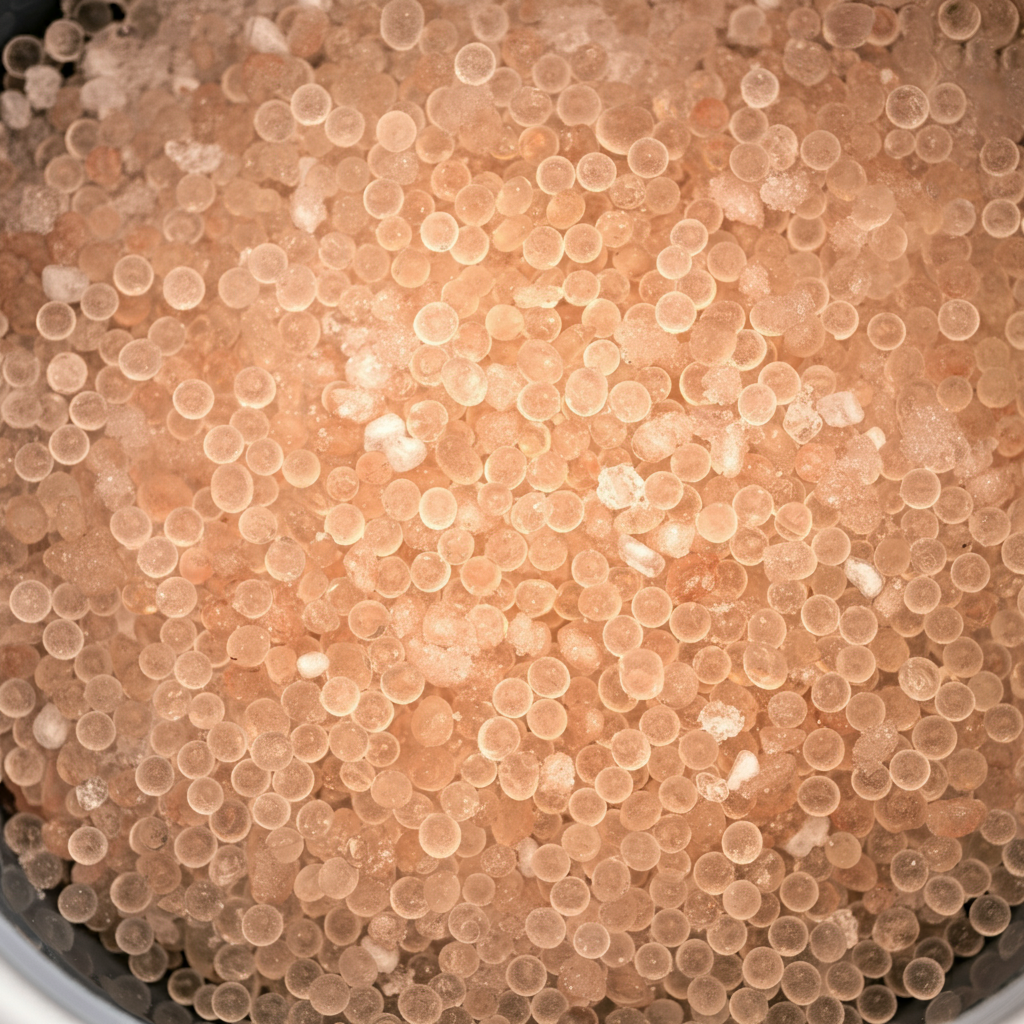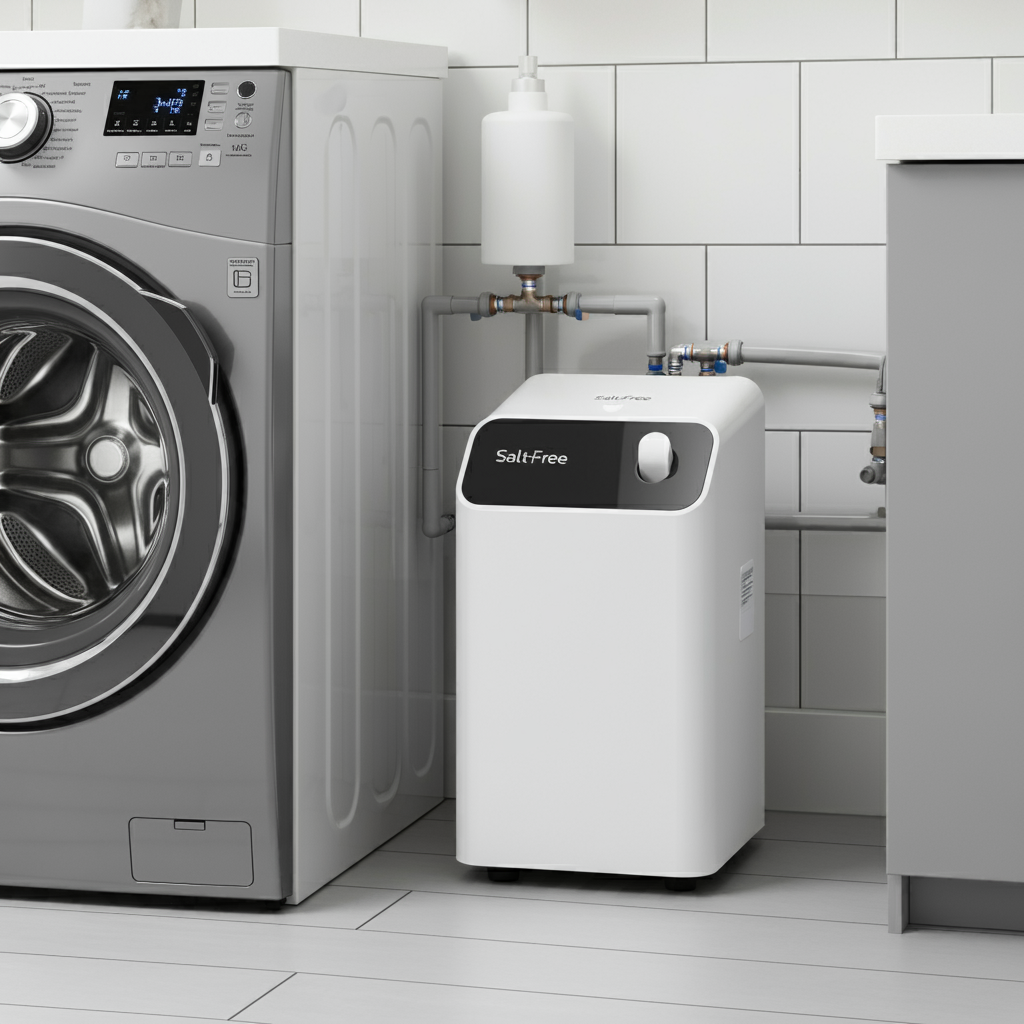The primary difference in sizing between salt-based and salt-free water softeners lies in the fundamental way they address hard water. Salt-based softeners, like those offered by industry leaders SoftPro, Culligan and Kinetico, are sized primarily based on the hardness of your water (measured in grains per gallon – gpg) and your daily water usage (gallons). In contrast, salt-free water conditioners, such as those from SpringWell or Pelican, focus on your home’s peak flow rate (gallons per minute) and pipe size during the sizing process. Understanding these distinctions is essential when choosing the right water softener for your needs. While both systems aim to mitigate the effects of hard water, they employ different mechanisms, leading to distinct sizing considerations. Salt-based softeners use a process called ion exchange, physically removing the calcium and magnesium ions that cause hardness. Salt-free conditioners, however, use Template Assisted Crystallization (TAC) to alter the structure of these minerals, preventing them from forming scale buildup. At WaterSoftenerSizing.com, we recognize that navigating these differences can be daunting. That’s why we’re here to help you make an informed decision. Our expertise in water softening technology allows us to assess your unique requirements and recommend a softener that not only fits your home’s plumbing but also addresses your specific water hardness levels. Whether you’re battling stubborn scale buildup or simply seeking softer skin and hair, we’re committed to ensuring you select a softener that delivers optimal results and long-term value. Choosing the correct size is crucial for both types of systems. An undersized salt-based softener won’t effectively remove all the hardness minerals in your water, while an undersized salt-free conditioner may not be able to handle your home’s peak water flow, leading to reduced effectiveness. On the other hand, oversizing a salt-based softener can result in wasted salt and water, while oversizing a salt-free system is less of a concern as it doesn’t consume salt.
How Do Salt-Based and Salt-Free Water Softeners Work?
To truly grasp the sizing differences, it’s crucial to first understand how each type of water softener operates.
Salt-Based Water Softeners: The Ion Exchange Process
Salt-based water softeners, like those offered by leading brands SoftPro, Culligan and Kinetico, rely on a process called ion exchange. Inside the softener, there’s a mineral tank filled with tiny resin beads. These beads carry a negative charge and attract positively charged ions. When hard water, rich in calcium (Ca2+) and magnesium (Mg2+) ions, enters the tank, the resin beads capture these hardness ions, replacing them with sodium (Na+) ions. This exchange effectively “softens” the water, preventing scale buildup and soap scum. Over time, the resin beads become saturated with hardness minerals and lose their effectiveness. This triggers a regeneration cycle, where a highly concentrated salt solution (brine) flushes the resin bed, removing the trapped calcium and magnesium and replacing them with sodium, preparing the softener for another round of softening.
Salt-Free Water Conditioners: The Template Assisted Crystallization (TAC) Process
Salt-free water conditioners, often called “water descalers,” take a different approach. Instead of removing hardness minerals, they utilize Template Assisted Crystallization (TAC) technology. In these systems, water passes through a chamber containing a specialized medium. This medium encourages calcium and magnesium ions to form microscopic crystals. These crystals remain suspended in the water, preventing them from adhering to surfaces and causing scale. Importantly, salt-free conditioners do not alter the chemical composition of the water. The hardness minerals remain present but in a modified, less problematic form.
Key Differences and Impact on Sizing
The fundamental difference in how these systems work directly influences their sizing considerations.
- Salt-based softeners need to be sized to accommodate the amount of hardness minerals they’ll remove before needing regeneration. This is determined by water hardness and daily water usage.
- Salt-free conditioners are not limited by the need to remove minerals, so their size is less dependent on water hardness. Instead, the focus shifts to the system’s ability to handle the maximum flow rate of water in your home, which is influenced by your plumbing’s peak demand and pipe size.
In essence, salt-based softeners are sized based on capacity, while salt-free conditioners are sized based on flow rate. Understanding this distinction is the first step towards choosing the right size softener for your specific needs. 
Key Factors That Determine Water Softener Size
Before we dive into the specific sizing nuances of each softener type, let’s discuss the universal factors that influence the size of any water softening system.
Water Hardness (gpg)
The hardness of your water is the single most critical factor in determining the size of a water softener. Hardness is measured in grains per gallon (gpg) and refers to the concentration of dissolved calcium and magnesium in your water supply. The higher the gpg, the harder your water is, and the more capacity your softener will need to effectively treat it. To determine your water hardness, you can purchase a simple test kit online or at most hardware stores. Alternatively, you can contact your local water utility or a water treatment professional for a water analysis. Water hardness levels can vary significantly depending on your geographical location and water source.
Daily Water Usage (Gallons)
The second key factor is your household’s daily water usage. This includes all the water you use for showers, baths, laundry, dishwashing, and other household activities. The more water you use, the greater the demand on your water softener, and therefore, the larger the system you’ll need. Estimating your daily water usage can be as simple as checking your water bill or using an online water usage calculator. You can also track your water usage for a week and calculate the average daily consumption.
The Interplay Between Hardness and Usage
These two factors – water hardness and daily water usage – are interconnected. A household with moderately hard water (10 gpg) and high water usage (300 gallons per day) will require a larger softener than a household with the same water hardness but lower usage (150 gallons per day). Understanding the interplay between these factors is crucial for choosing the right size water softener. That’s where our expertise at WaterSoftenerSizing.com comes in. We can help you analyze your water test results and estimate your daily water usage to pinpoint the optimal softener size for your specific needs.
Sizing Salt-Based Water Softeners: Capacity and Efficiency are Key
When it comes to sizing a salt-based water softener, the primary considerations are the system’s grain capacity and its salt efficiency. These two factors work in tandem to determine how effectively the softener can remove hardness minerals and how often it needs to regenerate.
Grain Capacity: The Workhorse of Your Softener
The grain capacity of a salt-based softener indicates how much hardness it can remove before needing to regenerate. It’s typically measured in thousands of grains (e.g., 32,000 grains, 48,000 grains). Higher grain capacity translates to a longer time between regeneration cycles, which can be more convenient for homeowners. To determine the ideal grain capacity for your home, you’ll need to consider both your water hardness and your daily water usage. For instance, a family of four with moderately hard water (15 gpg) using around 300 gallons of water per day might require a 32,000-grain softener to comfortably last a week between regenerations. It’s worth noting that oversizing your salt-based softener in terms of grain capacity is generally not a major issue. It simply means the system will regenerate less frequently. However, significantly oversizing can lead to inefficiencies, as the softener may use more salt and water than necessary during each regeneration cycle.
Salt Efficiency: Optimizing Performance and Resource Use
Salt efficiency refers to how effectively a softener uses salt during the regeneration process. Some modern salt-based softeners, like those offered by Fleck, utilize advanced technology to optimize salt usage, reducing waste and saving you money on salt refills. A more salt-efficient softener will typically require a smaller brine tank for salt storage, as it uses less salt per regeneration. However, it’s important to strike a balance between salt efficiency and grain capacity. A highly efficient softener with a low grain capacity might require more frequent regenerations, negating the benefits of salt savings. When choosing a salt-based softener, it’s wise to look for models that are certified by the Water Quality Association (WQA). The WQA Gold Seal certification indicates that the softener meets rigorous standards for performance and efficiency, ensuring you’re investing in a reliable and effective system.
Sizing Salt-Free Water Conditioners: Flow Rate Takes Center Stage
Unlike their salt-based counterparts, salt-free water conditioners don’t remove hardness minerals. As such, their sizing isn’t determined by the amount of hardness in your water or your daily usage. Instead, the primary factor that dictates the size of a salt-free conditioner is the flow rate of your home’s plumbing.
Flow Rate (GPM): The Key to Salt-Free Sizing
Flow rate refers to the amount of water that flows through your pipes at any given time, measured in gallons per minute (GPM). Every salt-free conditioner has a maximum flow rate capacity. Exceeding this limit can hinder its ability to effectively treat the water and prevent scale formation. To determine your home’s peak flow rate, you’ll need to consider the number of bathrooms and water-using appliances you have, as well as the size of your plumbing pipes. For example, a home with multiple bathrooms, a large washing machine, and 1-inch plumbing pipes will have a higher peak flow rate than a smaller home with fewer appliances and half-inch pipes.
Pipe Size: A Supporting Factor
The diameter of your plumbing pipes plays a supporting role in determining the size of your salt-free conditioner. Larger pipes can accommodate higher flow rates, meaning you may need a larger conditioner to match the increased water flow.
Sizing Example for Salt-Free Conditioners
Let’s consider a household with 1-inch plumbing throughout, two bathrooms, and a high-efficiency washing machine. The peak flow rate for such a home might be around 10-12 gallons per minute. In this case, a salt-free conditioner with a flow rate capacity of at least 12 GPM would be necessary to ensure proper treatment of all the water flowing through the system.
Oversizing and Undersizing Salt-Free Conditioners
Oversizing a salt-free conditioner isn’t a major concern, as it won’t negatively impact its performance or efficiency. However, undersizing can be problematic. If the conditioner’s flow rate capacity is lower than your home’s peak demand, the water may flow through too quickly for the TAC process to effectively modify the hardness minerals, reducing the system’s overall effectiveness. When selecting a salt-free conditioner, it’s crucial to choose a model that can comfortably handle your home’s peak flow rate. Consulting with a water treatment professional or using an online sizing calculator provided by reputable brands like SpringWell or Pelican can help you make an informed decision.
Pros and Cons of Each Softener Type: Weighing Your Options
Now that we’ve explored the mechanics and sizing of both salt-based and salt-free systems, let’s weigh the advantages and disadvantages of each to help you make an informed decision.
Salt-Based Water Softeners: Proven Effectiveness with Maintenance Requirements
Pros:
- Effective Hardness Removal: Salt-based softeners excel at removing calcium and magnesium, providing you with genuinely soft water that leaves your skin feeling silky, your hair looking lustrous, and your appliances running efficiently.
- Long Lifespan: With proper maintenance and care, a salt-based softener can last 15-20 years, making it a long-term investment in your home’s water quality.
- Lower Operating Costs: While the initial investment might be higher, salt-based softeners often have lower operating costs due to their efficient use of salt and water during regeneration.
Cons:
- Salt Usage: These systems require regular replenishment of salt, which can be a recurring expense and inconvenience.
- Maintenance: Periodic maintenance, such as cleaning the brine tank and checking for salt bridges, is necessary to keep the softener functioning optimally.
- Increased Sodium in Softened Water: The ion exchange process introduces sodium into the water, which may be a concern for individuals on sodium-restricted diets.
- Water Waste: A small amount of water is used during the regeneration process, which can contribute to overall water consumption.
Salt-Free Water Conditioners: Low-Maintenance, Eco-Friendly Alternative
Pros:
- No Salt Usage: Salt-free conditioners don’t require any salt or potassium, making them a maintenance-free and environmentally friendly option.
- No Wastewater: Unlike salt-based systems, salt-free conditioners don’t produce any wastewater during their operation.
- Sodium-Free Water: The treated water remains sodium-free, making it suitable for those on low-sodium diets.
Cons:
- Less Effective on Very Hard Water: Salt-free systems are generally less effective at preventing scale in homes with extremely hard water.
- Doesn’t Remove Existing Scale: While they can prevent future scale buildup, salt-free conditioners won’t dissolve existing scale deposits in your pipes and appliances.
- May Not Address All Hard Water Issues: Some users report that salt-free systems don’t fully alleviate all the effects of hard water, such as dry skin and soap scum.
- Higher Initial Cost: Salt-free conditioners can be more expensive upfront than comparable salt-based softeners.
Choosing the Right System for You
The best choice for you ultimately depends on your individual needs and priorities. If you have very hard water and want the most effective hardness removal, a salt-based softener is the preferred choice. If you’re looking for a low-maintenance, eco-friendly solution and have moderately hard water, a salt-free conditioner might be a good fit.
Choosing the Right Size for Your Needs: Finding Your Perfect Match
Selecting the right size water softener is not a one-size-fits-all scenario. It requires a personalized approach that considers your unique circumstances and preferences. At WaterSoftenerSizing.com, we’re committed to guiding you through this process, ensuring you invest in a system that delivers optimal performance and value for years to come. 
Understanding Your Priorities: Salt-Based or Salt-Free?
The first step in determining the right size is deciding between a salt-based softener and a salt-free conditioner. This choice hinges on your priorities and the specific challenges you face with your water.
- Do you have severely hard water (over 15 gpg)? If so, a salt-based softener is likely your best bet. These systems are the most effective at removing high levels of hardness minerals, ensuring you have truly soft water throughout your home.
- Is low-maintenance a top priority? Salt-free conditioners are virtually maintenance-free, as they don’t require salt refills or regular cleaning. However, they may not be as effective in combating very hard water.
- Are you concerned about sodium intake or environmental impact? Salt-free systems don’t add sodium to your water and produce no wastewater, making them a more eco-conscious and health-conscious choice.
Utilizing Sizing Tools and Resources
Once you’ve chosen the type of system that aligns with your needs, it’s time to determine the appropriate size. Fortunately, there are several resources available to help you with this:
- Online Sizing Calculators: Reputable brands like SoftPro, Culligan and Kinetico offer user-friendly online calculators on their websites. These tools take into account your water hardness, daily water usage, and household size to estimate the ideal softener size.
- WaterSoftenerSizing.com Calculator: We provide a comprehensive sizing calculator that considers all the relevant factors, including your water hardness, daily water usage, household size, and specific appliances (e.g., high-efficiency washing machine, tankless water heater). This personalized approach ensures you receive the most accurate sizing recommendations.
- Consulting with Water Treatment Professionals: If you have complex needs or prefer expert guidance, our team at WaterSoftenerSizing.com is here to help. We offer personalized consultations to assess your water quality and usage patterns, recommend the most suitable softener models, and connect you with trusted installers in your area.
The Importance of Professional Installation
Even with the right size softener, proper installation is crucial for optimal performance. We strongly recommend working with a qualified plumber or water treatment professional to install your system. They have the expertise to ensure the softener is integrated seamlessly into your plumbing, preventing leaks, pressure drops, and other issues that can compromise its efficiency.
Making the Right Choice: Your Path to Softer Water
As we’ve explored, the difference in sizing between salt-based and salt-free water softeners is not merely a matter of dimensions; it reflects a fundamental difference in how these systems operate and the specific needs they address. Salt-based softeners, with their ion exchange technology, focus on removing hardness minerals and are sized based on water hardness and daily usage. Salt-free conditioners, utilizing Template Assisted Crystallization (TAC), aim to prevent scale buildup and are sized based on flow rate and pipe size. Understanding these distinctions is pivotal in selecting a system that aligns with your household’s unique requirements. At WaterSoftenerSizing.com, we’re dedicated to simplifying this decision-making process. Our expertise in water softening technology and our commitment to customer satisfaction ensure you’ll find the perfect solution for your home’s water needs. Key Takeaways:
- Salt-based softeners remove hardness minerals through ion exchange, while salt-free conditioners alter their structure to prevent scale.
- Water hardness (gpg) and daily water usage are the primary factors influencing the size of salt-based softeners.
- Flow rate (GPM) and pipe size are the key considerations for sizing salt-free conditioners.
- Salt-based softeners are generally more effective at removing high levels of hardness, while salt-free systems offer a low-maintenance, eco-friendly alternative.
- Online sizing calculators and professional consultations can help you determine the ideal size for your specific needs.
Your Next Step to Softer Water Ready to transform your water and experience the benefits of softened water? Visit WaterSoftenerSizing.com today to utilize our free water softener sizing calculator, explore our comprehensive resources, or contact our team of experts for personalized guidance. We’re here to help you make an informed decision and enjoy the luxury of soft, clean water in your home.

Craig “The Water Guy” Phillips is the founder of Quality Water Treatment (QWT) and creator of SoftPro Water Systems.
With over 30 years of experience, Craig has transformed the water treatment industry through his commitment to honest solutions, innovative technology, and customer education.
Known for rejecting high-pressure sales tactics in favor of a consultative approach, Craig leads a family-owned business that serves thousands of households nationwide.
Craig continues to drive innovation in water treatment while maintaining his mission of “transforming water for the betterment of humanity” through transparent pricing, comprehensive customer support, and genuine expertise.
When not developing new water treatment solutions, Craig creates educational content to help homeowners make informed decisions about their water quality.


